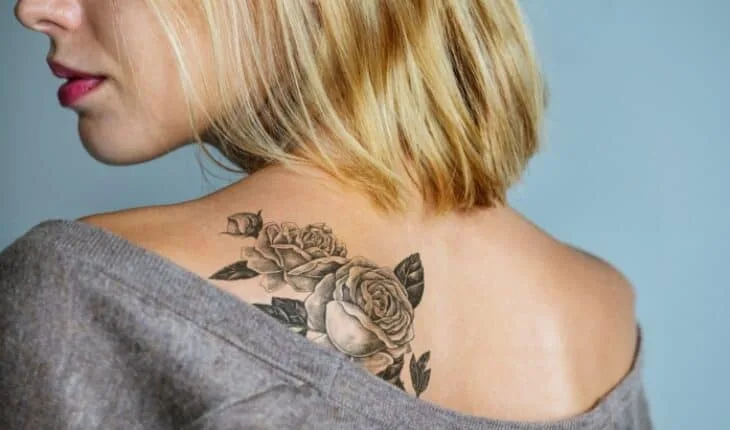While everybody tolerates pain differently, getting a tattoo involves repeatedly piercing your skin’s top layer with a sharp needle, which is inevitably going to be painful, no matter which body part is getting inked.
However, there are of course some body parts that are more painful than others. Tattoo artists at LLTattoo have revealed which body parts hurt the most to have tattooed, as well as expert tips on how to handle the pain.
1. Genitals
Genital tattoos, while they are less common, are widely regarded as the most painful due to the high number of nerve endings in the area, which can send pain signals throughout the entire body. The skin in this region is also very thin, which further amplifies the pain sensation. Beyond the physical pain, a genital tattoo can also be quite uncomfortable due to the private nature of the body part involved. Those considering a tattoo in this area should be fully aware of the heightened pain levels and should discuss this with their tattoo artist beforehand. Professionalism and comfort with the tattoo artist are also crucial when getting a genital tattoo.
2. Armpit
Armpit tattoos are notoriously painful due to the thinner skin and high number of nerves in the area, making it extremely sensitive to the tattoo needle’s puncture. Additionally, the armpit’s close proximity to lymph nodes can result in further discomfort throughout the tattooing process. It can also be a difficult area to heal a tattoo due to the constant movement. Overall, an armpit tattoo requires a lot of thought and consideration, and it definitely shouldn’t be one of your first.
3. Rib cage
The rib cage is infamously painful to have tattooed, largely due to the thin layer of skin in the area. When the tattoo needle hits the ribs, it causes a sharp pain, as there is little flesh to cushion the impact. On top of this, the rib area expands and contracts with each breath, which can further heighten the pain during the tattooing session. This sensitivity, combined with the vibrations caused by the needle hitting the bones, makes the rib cage one of the more painful tattoo locations.
4. Elbows and knees
Elbow and knee tattoos are well-known for their high pain levels due to the minimal amount of muscle and fat in these areas. This results in the tattoo needle working closely over bone, which intensifies the pain. The skin around the elbows and knees is also tougher and less elastic, making the tattooing process more painful. The frequent movement of these joints can also prolong the healing process and increase discomfort during recovery. Due to these factors, tattoos on the elbows and knees are often particularly challenging, during both the tattooing process and healing period, requiring a high pain tolerance from those who choose to get them.
5. Hands and feet
The hands and feet are considered among the more painful spots to get inked, especially on the palms and bottom of the feet. This is largely because these areas have a high number of nerve endings and thinner layers of skin over the bone. Furthermore, the skin in these areas is subject to constant movement and exposure, which can complicate the healing process. Those opting for tattoos on their hands or feet should prepare for challenging tattoo experience and a diligent aftercare routine.
Top tips for dealing with tattoo pain
1. Eat before and during your tattoo
It is crucial to ensure you have eaten and are well-hydrated before getting a tattoo; having an empty stomach can cause lightheadedness or dizziness due to lower energy and blood sugar levels. It is also important to keep your blood sugar levels up during the tattoo, so bring along a fizzy drink, sweets, chocolate, or anything else you like that has plenty of sugar.
2. Get a good night’s sleep
Before getting a tattoo, it is important to get a good night’s rest, especially if you are booked in for a longer session. A well-rested body can cope better with stress and pain, therefore making the tattooing process slightly easier.
3. Consider using a numbing cream
Numbing creams or sprays can be a great way of taking the edge off during the tattoo process, especially for those with low pain tolerance or when targeting sensitive areas. Numbing creams work by temporarily blocking the nerve signals in the skin. This reduction in sensation allows people to undergo longer tattoo sessions with more comfort, making it easier to tackle large designs or tattoos located in painful areas. However, it’s important to consult with the tattoo artist first before using any numbing products, as some can affect the skin’s texture or ink absorption.
Mentor Dedaj, a spokesperson for LLTattoo has commented:
“It is important to realize that any tattoo hurts, and to not go to your appointment with false expectations. With that being said, there are definitely some areas that hurt more than others. It is generally areas with less fat and thinner skin that hurt the most, such as the rib cage and the knees, as there is less cushion for the needle. Areas with a high concentration of nerve endings, such as the armpit, are also notorious for being quite painful.
“If you’re getting your first tattoo, some of the less painful areas are your outer forearm and upper arm, as they are fleshy areas that are low on nerve endings. However, after a few tattoos, you might start thinking about getting one in a more painful area. While they are never pleasant, they are bearable as long as you visit a reputable tattoo artist and prepare yourself beforehand.”
This information was provided by LLTattoo, experts in tattoos.
- Gut microbiome could delay onset of type 1 diabetes - 3rd April 2025
- The da Vinci 5 Robot Is Set To Transform Bariatric Care: - 31st March 2025
- Beyond money: the hidden drivers fuelling child food insecurity - 31st March 2025






